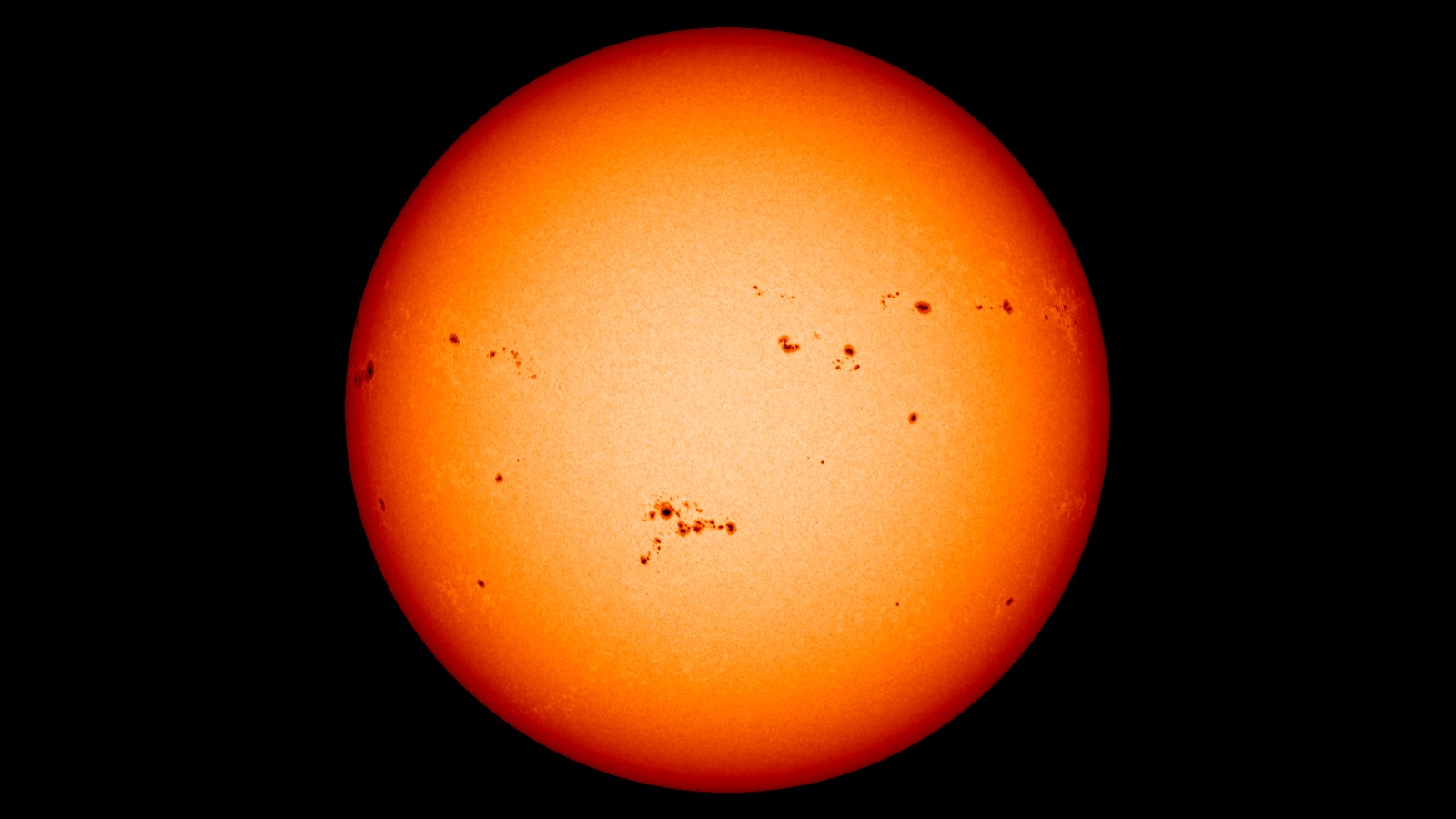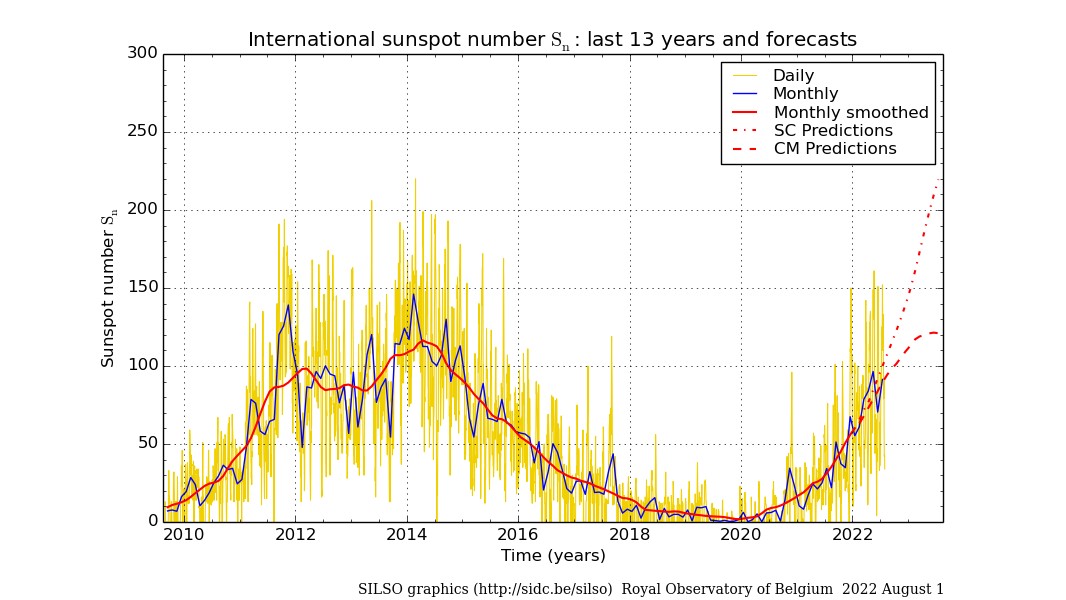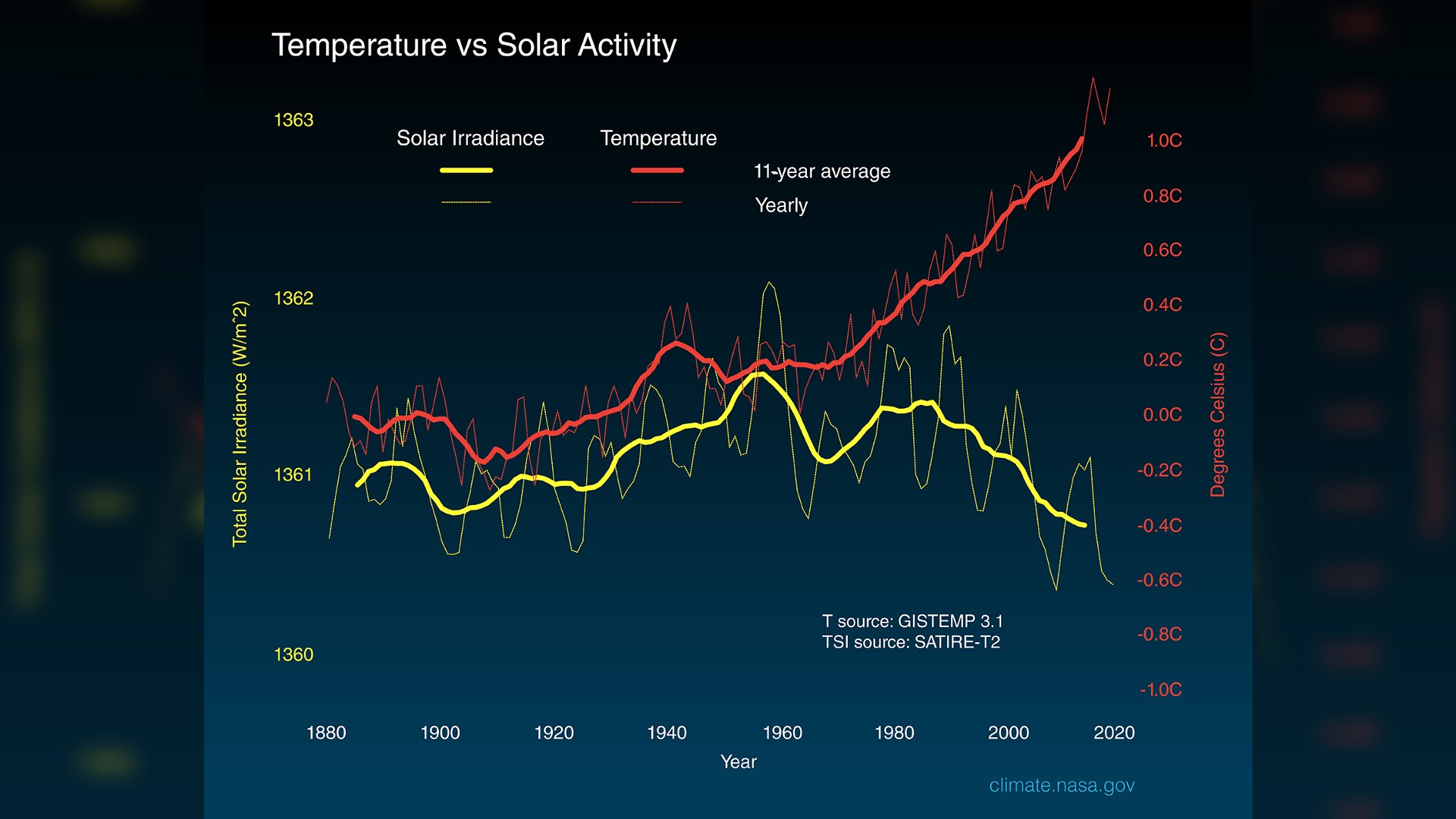Can sunspots affect the weather?
How is the Earth’s climate is affected by what happens on the sun?

The sun has a major impact on Earth: It provides the light and energy that are vital to life on our planet and dramatically shapes Earth’s climate. But the sun’s activity is not always constant, and areas of the sun can cool or even erupt dramatically. Can the sunspots that appear on our star’s surface affect the weather here on Earth? And how?
It turns out that individual sunspots themselves don’t affect the weather, but the changes in solar activity that they reveal can affect temperature, wind and weather on the planet.
What are sunspots?
Sunspots are darker areas on the sun's surface that come and go over days. Sometimes there are several sunspots on the sun, and they can even occur in swarms. Other times the sun has no spots. Sunspots form when intense magnetic activity on the surface of the sun exposes the star's cooler layers. However, these cooler patches only occur in great numbers when the sun is particularly active. So while a particular dark spot may emit less energy than the rest of the sun, the increased activity of the sun overall sends slightly more energy toward Earth.
How do sunspots affect Earth?
There is no direct link between a single sunspot appearing and a short-term cooling in Earth’s temperature. “It will reduce the amount of light hitting the Earth by about 0.1%,” said Greg Kopp, a senior research scientist at the University of Colorado's Laboratory for Atmospheric and Space Physics. “It would take the Earth’s energy system several months of such continual decrease to notice this effect energetically, but a sunspot doesn't persist that long.”
Earth’s system is too large to be affected by small dimmings from sunspots on short timescales, said Kopp, who likens it to dumping a bathtub of ice into a swimming pool. “You wouldn’t notice a change in overall water temperature, but if you did it every hour for days on end, you would eventually feel a change,” he said.
But sunspots are a sign of solar activity. “Solar variability does cause Earth-climate effects on long timescales,” Kopp said. Climate is a 30-year average of weather. “If the climate is warmer or cooler due to the sun, the average weather will be warmer or cooler too.”
However, there is absolutely no evidence that the sun's activity is responsible for the climate change we’ve seen over recent decades, which is caused by humans pumping greenhouse gasses into the atmosphere.
The solar cycle
Sunspots have been counted every day since 1610, and the observations are kept at the Royal Observatory of Belgium's World Data Center for the Sunspot Index and Long-term Solar Observations. This catalog of sunspots provides visual evidence for the solar cycle — a roughly 11-year period during which the number of sunspots goes from low to high and then back down to low.

Sunspots have been counted every day since 1610, and the observations are kept at the Royal Observatory of Belgium's World Data Center for the Sunspot Index and Long-term Solar Observations. This catalog of sunspots provides visual evidence for the solar cycle — a roughly 11-year period during which the number of sunspots goes from low to high and then back down to low.
Tracking sunspots is one way to track solar activity, “but it’s really the level of radiant energy the sun puts out across the wavelength spectrum that causes changes,” to Earth’s weather, Kopp said. For instance, shorter wavelengths of light produce more energy, so emitting more long wavelength light and less short wavelength light could, for instance, reduce the energy released by the sun.
The present Solar Cycle 25, which began in 2020, looks like it will be stronger than predicted. When there are a lot of sunspots there’s a very slight increase in the energy output from the sun, according to the National Weather Service.
“Years having higher numbers of sunspots generally correspond with warmer times on the Earth, not cooler times,” Kopp said.
“It’s about 1.5 degrees Celsius [2.7 degrees Fahrenheit] warmer on average when it’s most active,” Kopp said. “That does have an effect both globally and regionally on Earth’s temperatures, winds, fires and weather patterns.”
Sunlight and temperature

Scientists have long studied how the sun affects the global surface temperature on Earth. The output of light energy from the sun as experienced on Earth's upper atmosphere is called total solar irradiance (TSI). TSI falls if there’s a sustained drop in solar activity, which reduces the energy that hits Earth. However, TSI varies at most by 0.15% across the solar cycle, meaning its impact is dwarfed by human-caused climate change and other effects, according to NASA. For example, one study found just 0.1 C warming resulted from an increase in solar radiance in recent solar cycles, which was dwarfed by the impact of other natural phenomena such as the warming caused by volcanoes and the El Niño climate cycle in the Pacific Ocean.
Overall, scientists have found that sunspots' net effect on climate over long periods is at a nearly insignificant level. When the effect of general solar variation can be detected, it’s very slight and regional, not global, a 2001 study in the Journal of Geophysical Research found.
Originally published on Live Science.
Sign up for the Live Science daily newsletter now
Get the world’s most fascinating discoveries delivered straight to your inbox.

Jamie Carter is a freelance journalist and regular Live Science contributor based in Cardiff, U.K. He is the author of A Stargazing Program For Beginners and lectures on astronomy and the natural world. Jamie regularly writes for Space.com, TechRadar.com, Forbes Science, BBC Wildlife magazine and Scientific American, and many others. He edits WhenIsTheNextEclipse.com.










